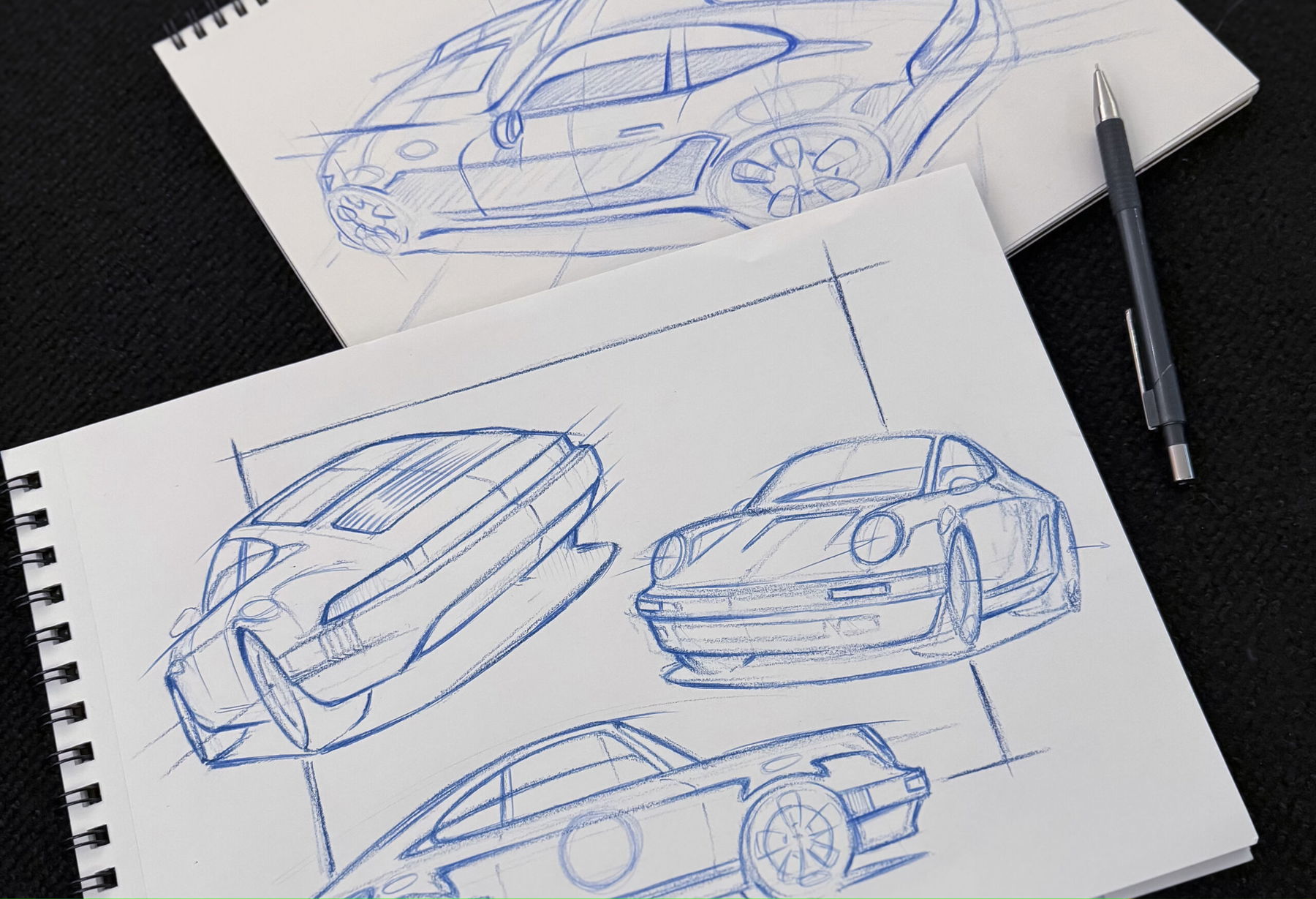
Marco Giuliano is an industrial designer, an enthusiastic draughtsman and has been crazy about cars from an early age. He now combines his passions professionally and creates so-called line art designs. Recently, these have also adorned limited edition back-print shirts in the Elferspot shop. Marco told me how this came about and why he rarely mentions art and design in the same breath during a tour of the National Automobile Museum.
I work full-time as a designer for a medium-sized industrial company here in Hesse. The owner of this company is also the owner of this unique vehicle collection. So I was able to follow at close quarters how this adventure land for car fans was created in the somewhat hidden town of Ewersbach. It only opened in the summer of 2023. My top boss knows about my part-time work as an artist and offered me support.

But with pleasure! I am Marco Giuliano, 35 years old, born and raised near Giessen in Hesse, the birthplace of Stefan Bellof. After graduating from high school and completing my community service, I studied industrial design at an art school in Denver, Colorado.
Giuliano is my middle name. I’ve often been asked if I have Italian roots. Unfortunately, the answer is no. Perhaps my parents have a more comprehensive answer. Maybe they just liked the sound of it. And I have to say, as a designer, there are certainly worse associations than Italy.
My father runs a small office for vehicle engineering. He does damage and value appraisals there. When I came home from school early as a child, I often had to kill time there. What I had to keep me occupied were pencils and our legendary “Deusing” desk pads. In other words, pages and pages of large paper to draw on. That’s where I first discovered the joy of drawing.
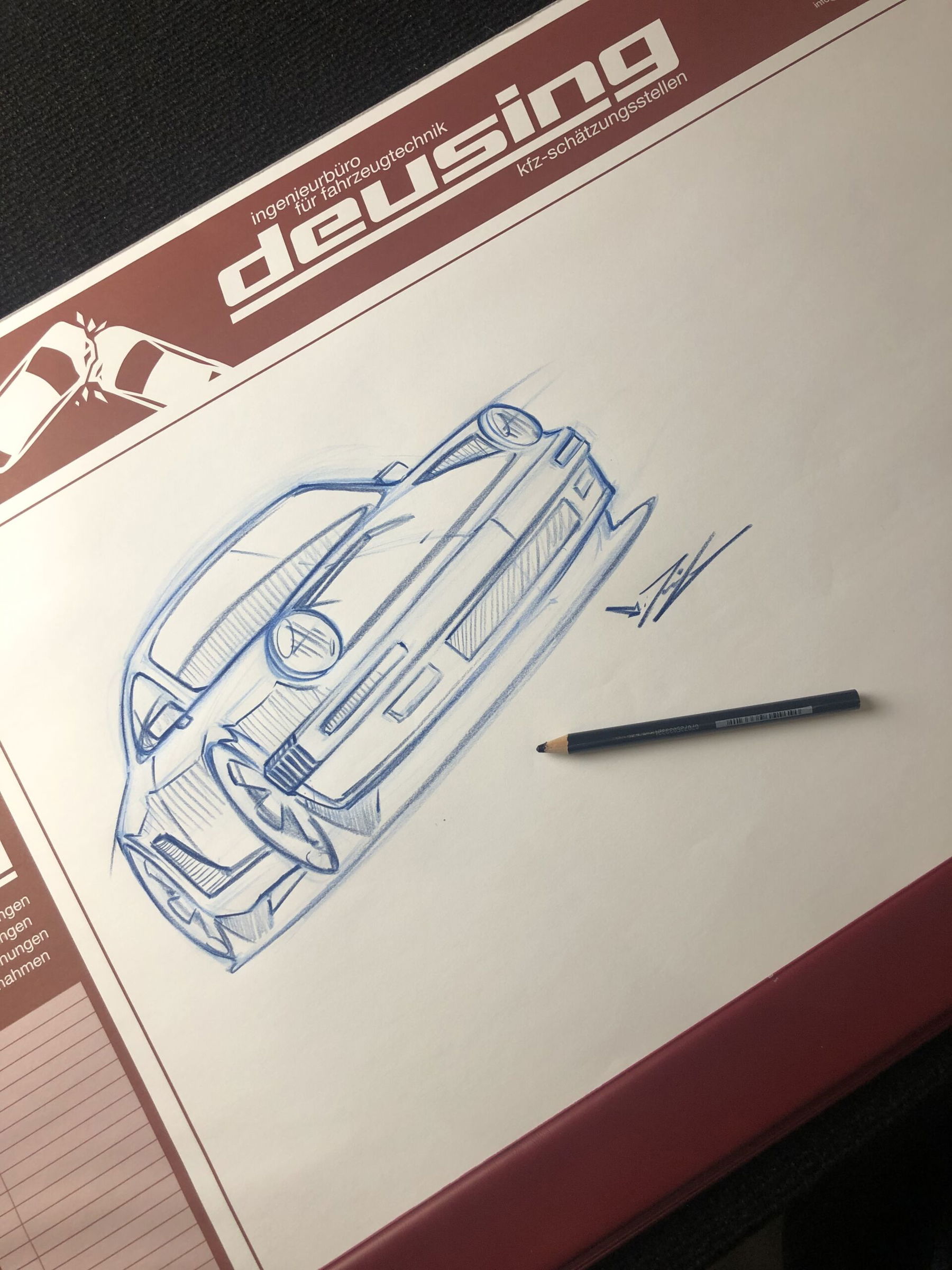
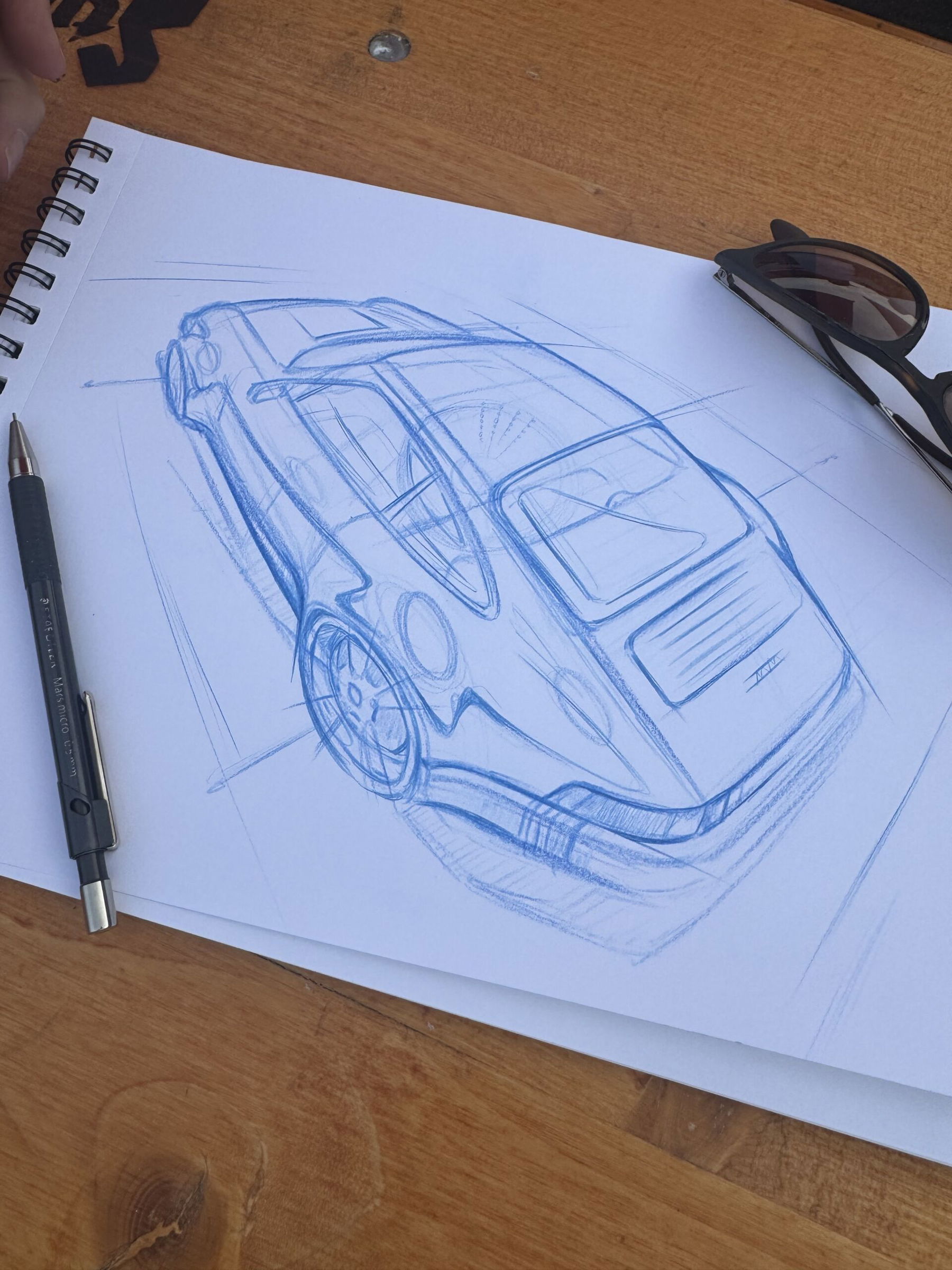
I drew all sorts of things, from comics to the customer vehicles out in the yard. Of course, back then it wasn’t like it is today. I had to use a lot of paper first. And then at some point I realized that I must have developed a skill. Others around me didn’t find drawing so easy and I realized that I was quite good at it. This motivated me to continue my education in this direction after graduating from high school.
After graduating from high school and doing my community service, I lived in the USA for almost four years. I studied industrial design at the Art Institute of Colorado. I actually had my first drawing lessons there. Nevertheless, I probably had a bit of a head start there because I was always drawing as a child. One of my professors used to say: “It’s about the mileage on your pen”. I guess that’s true.
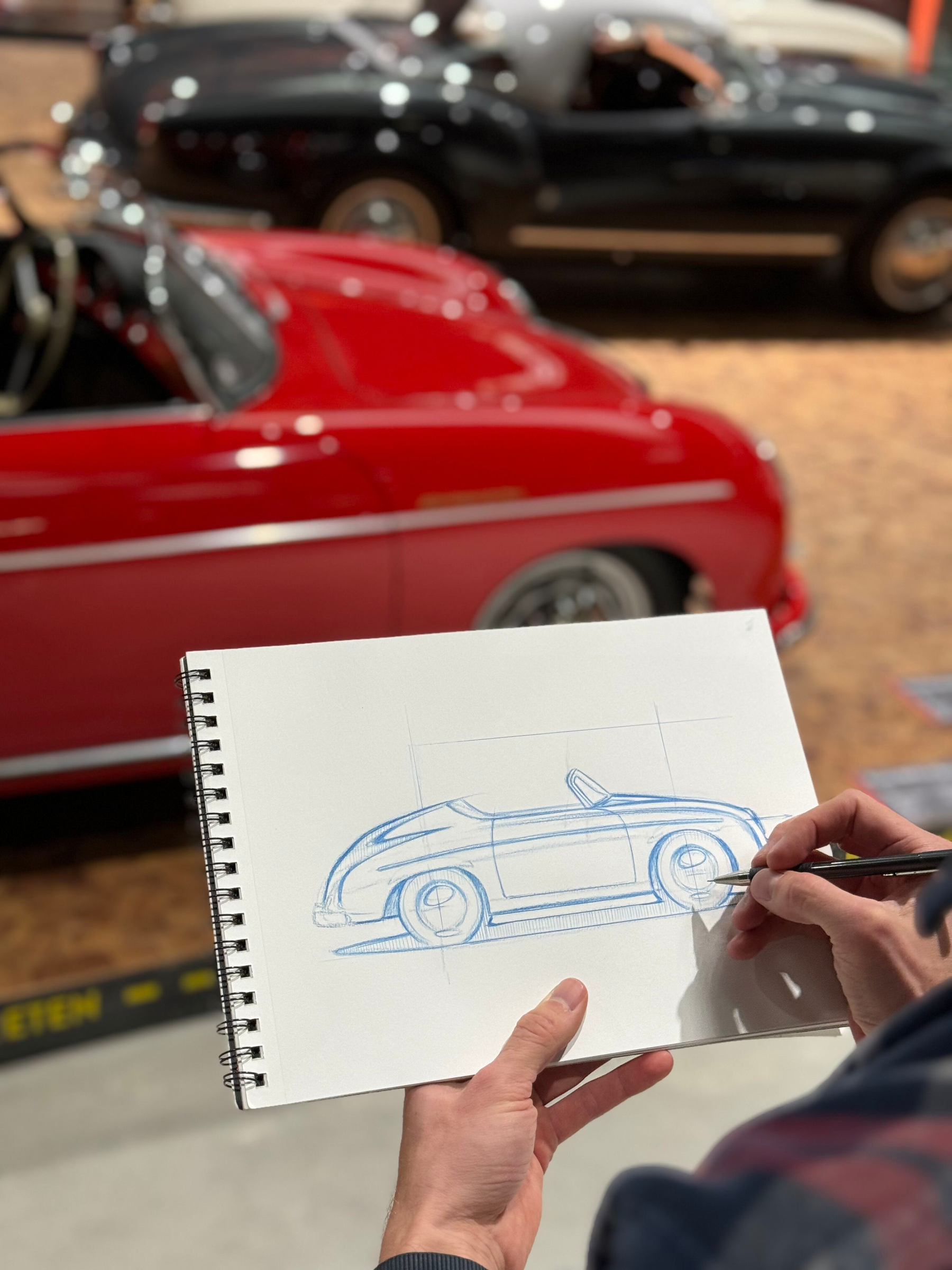
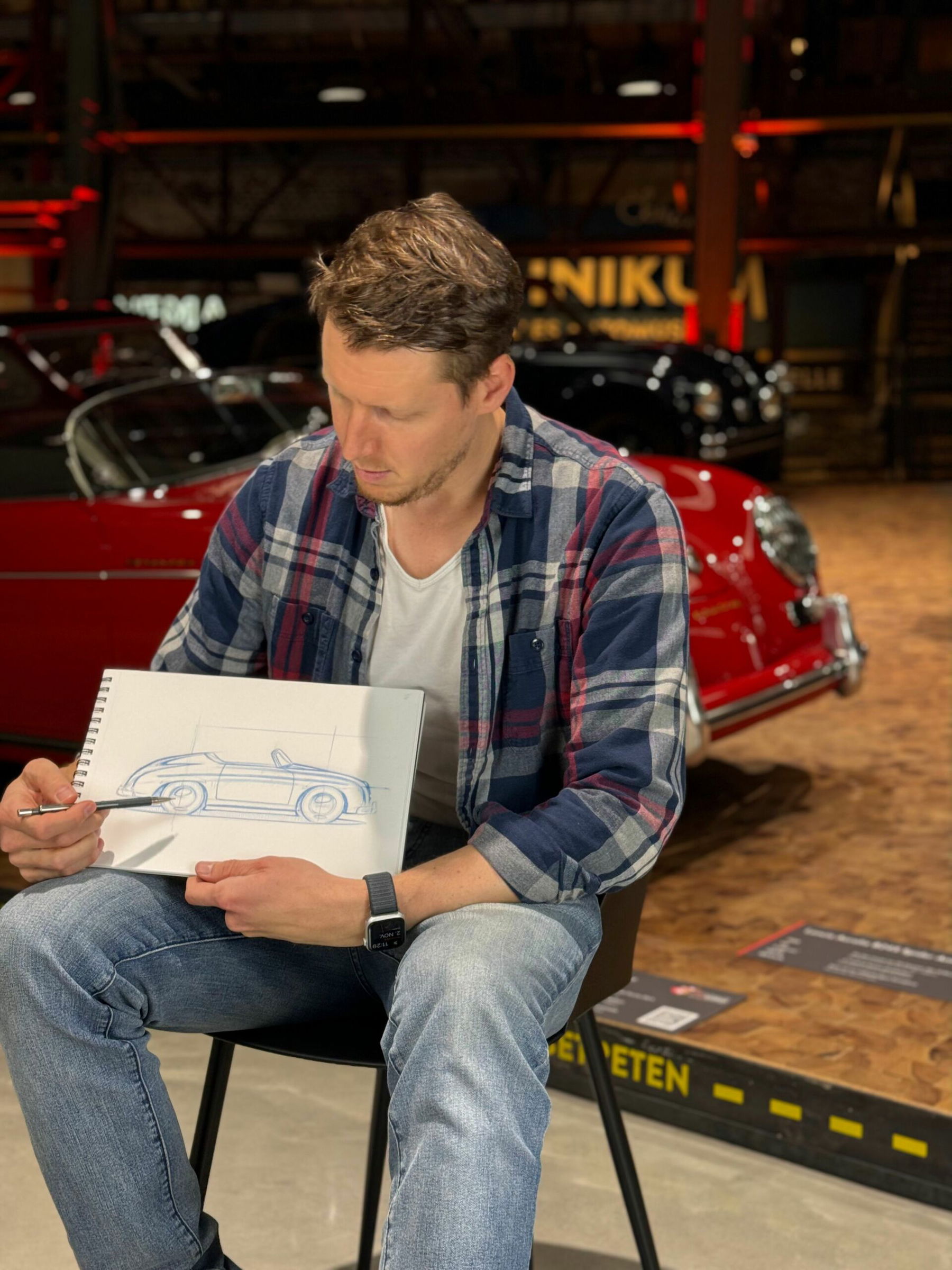
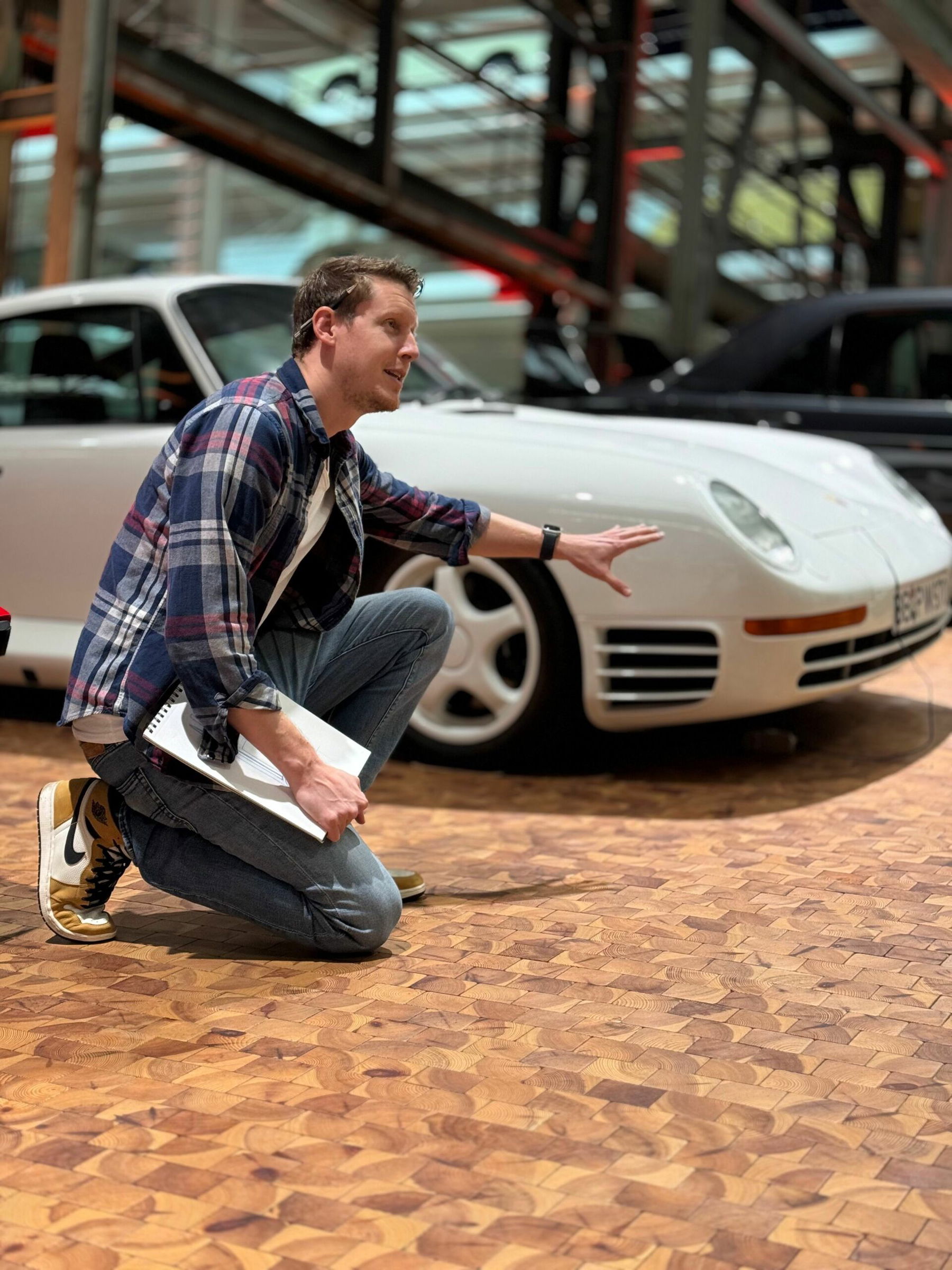
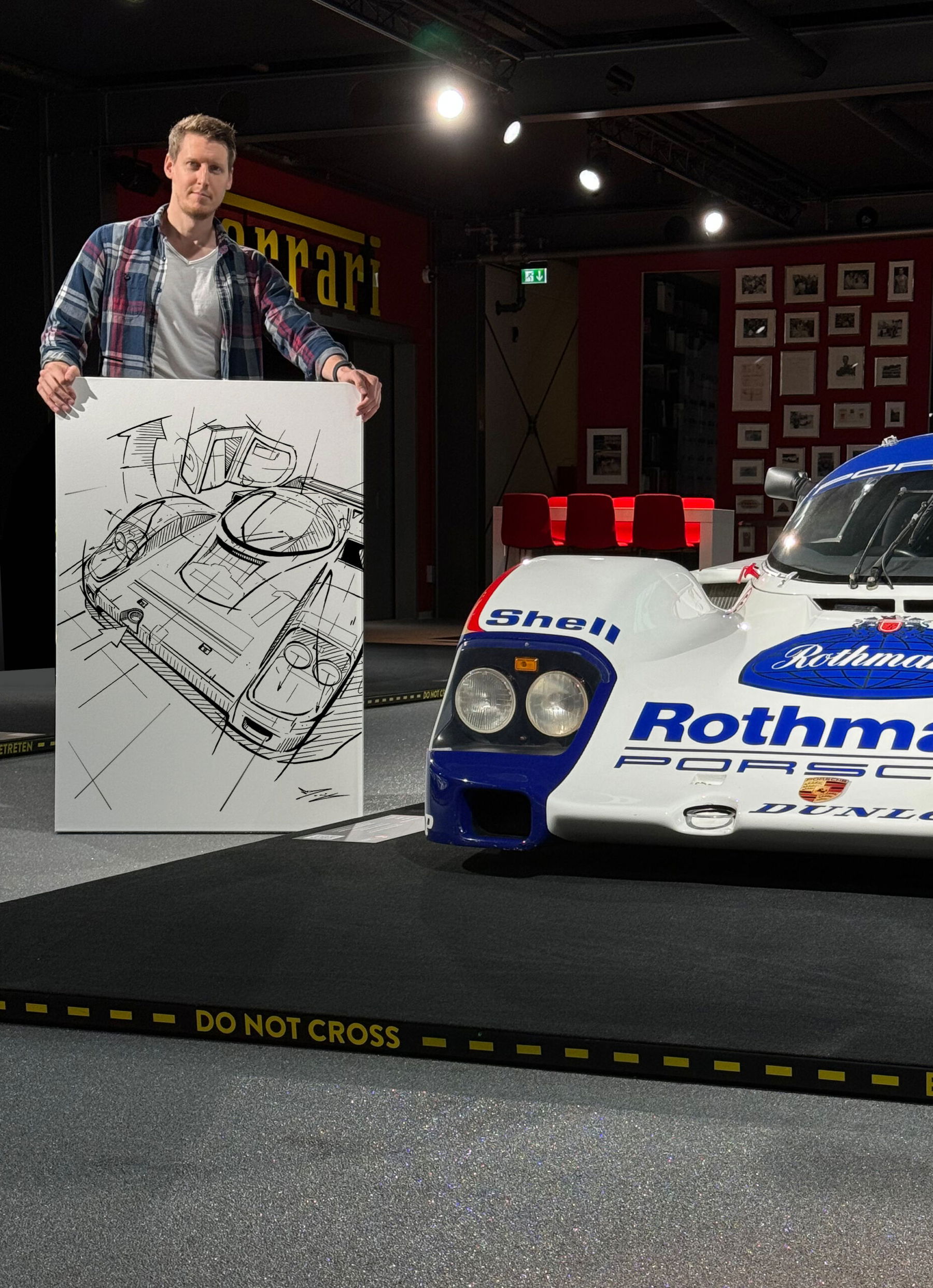
My interest in the USA was probably sparked by my father. When he was growing up, there were Americans stationed in our home village. There was a bar and a small movie theater near the barracks, where Americans and Germans had an informal exchange. Fascinated by this, my father made his first trip to the USA in the 70s and was thrilled.
Later it was family vacations. As a child, I was fascinated by air travel and the “look and feel” of the USA confirmed everything that Hollywood had promised me. You thought you were on a movie set when you crossed an ordinary intersection. After my older brother had completed an exchange year there, I could also imagine a longer period of time in the USA.
With the exception of the pandemic, I’ve been there every now and then to visit friends and go on vacation. Most recently, I went on a road trip from Denver to the West Coast with my girlfriend in May. Incidentally, I personally handed over a print to Lara (ThatPorscheGirl) in Newport Beach. She was the inspiration for the motif of the new Elferspot shirts.
The motif celebrates the independence and self-determination that the car gives us. It shows the last moment at walking speed before we get in and increase our range of movement to hundreds of miles. The perspective is deliberately chosen to be very low. Our human eye inevitably gets “stuck” on it, as this angle is unusual for us.
Design craft’s typical line hatching and the still visible construction lines make the composition look spontaneous and somewhat raw. The different line thicknesses make the foreground and background distinguishable from each other. And the vanishing point of the individual lines draws the eye to the center of the legendary Fuchs wheel. It is like the introduction to a story. And the design is like an intro, intended to arouse curiosity.
Well Richard, very good question! I’m trying to use my skills as a trained industrial designer to create something artistic. So the term artist is not completely wrong, but I have two problems with it. Firstly, I find it a bit overused. I have nothing at all in common with many people who present themselves as artists today. Secondly, neither I nor many of my buyers are great connoisseurs of art. What we have in common is a passion for good design and the story behind it.
I think both sides want to create visually appealing compositions. Ones, that do something to the viewer. But in my eyes there are actually contradictions. In my eyes, abstract art is very contradictory to design for example.
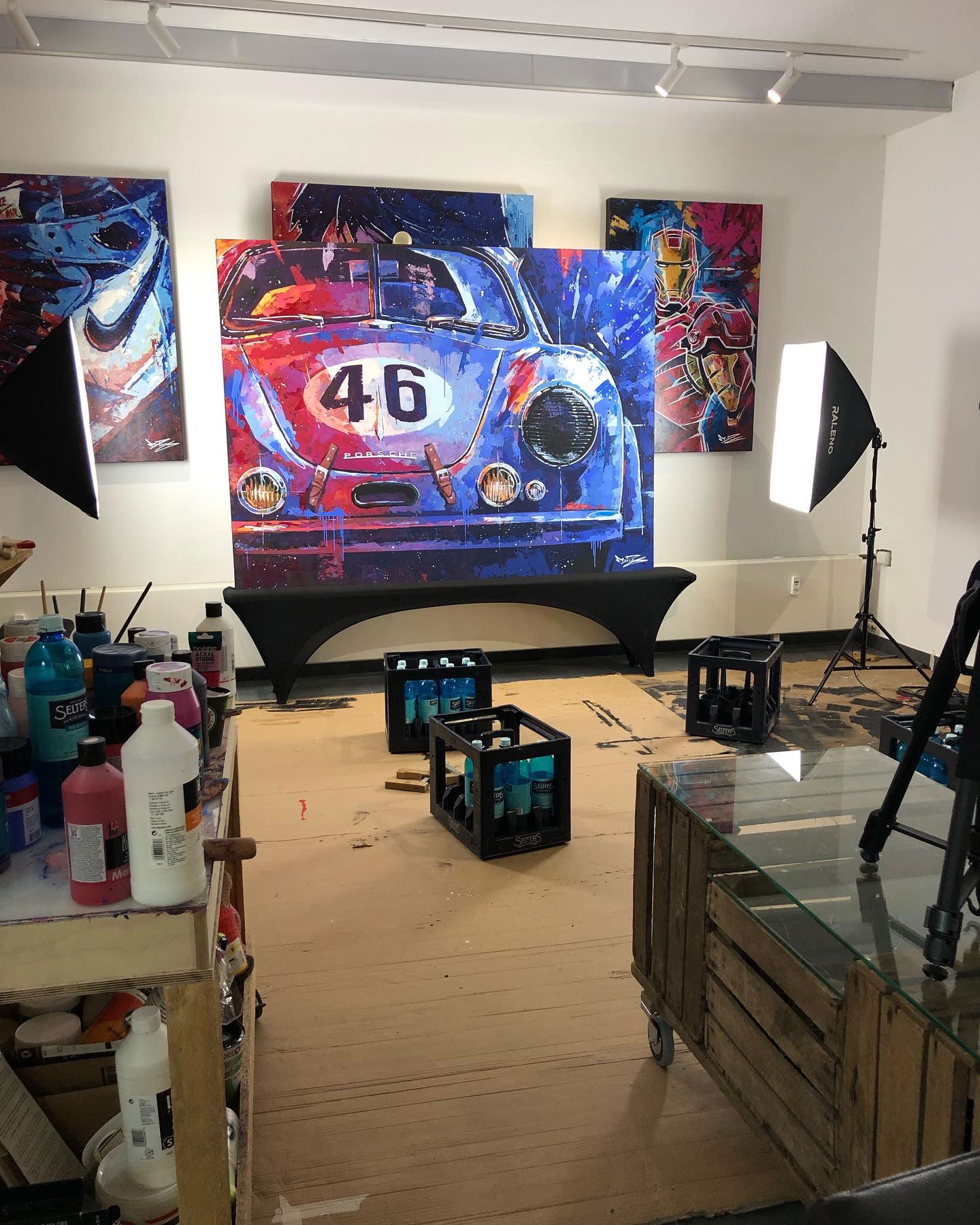
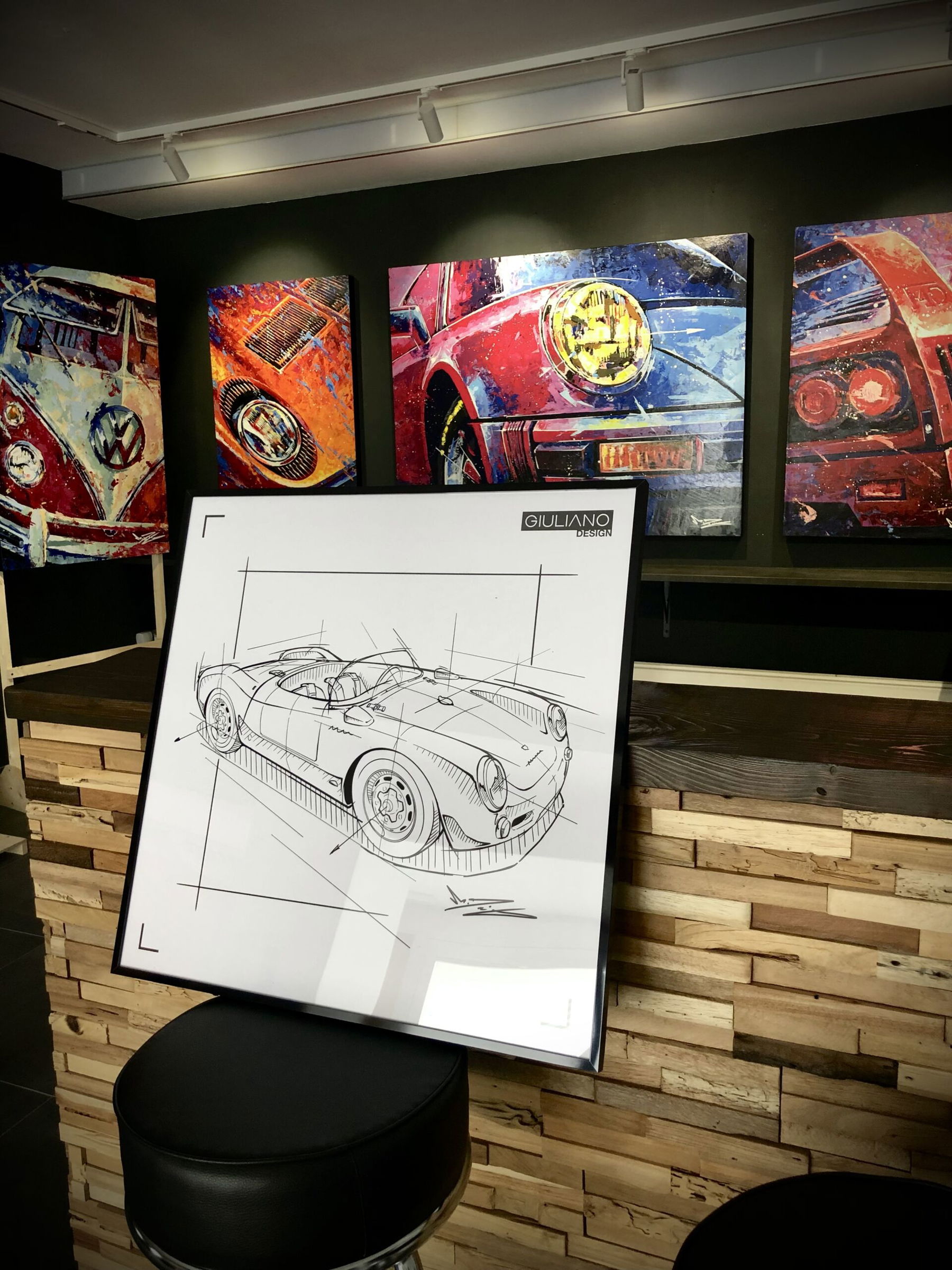
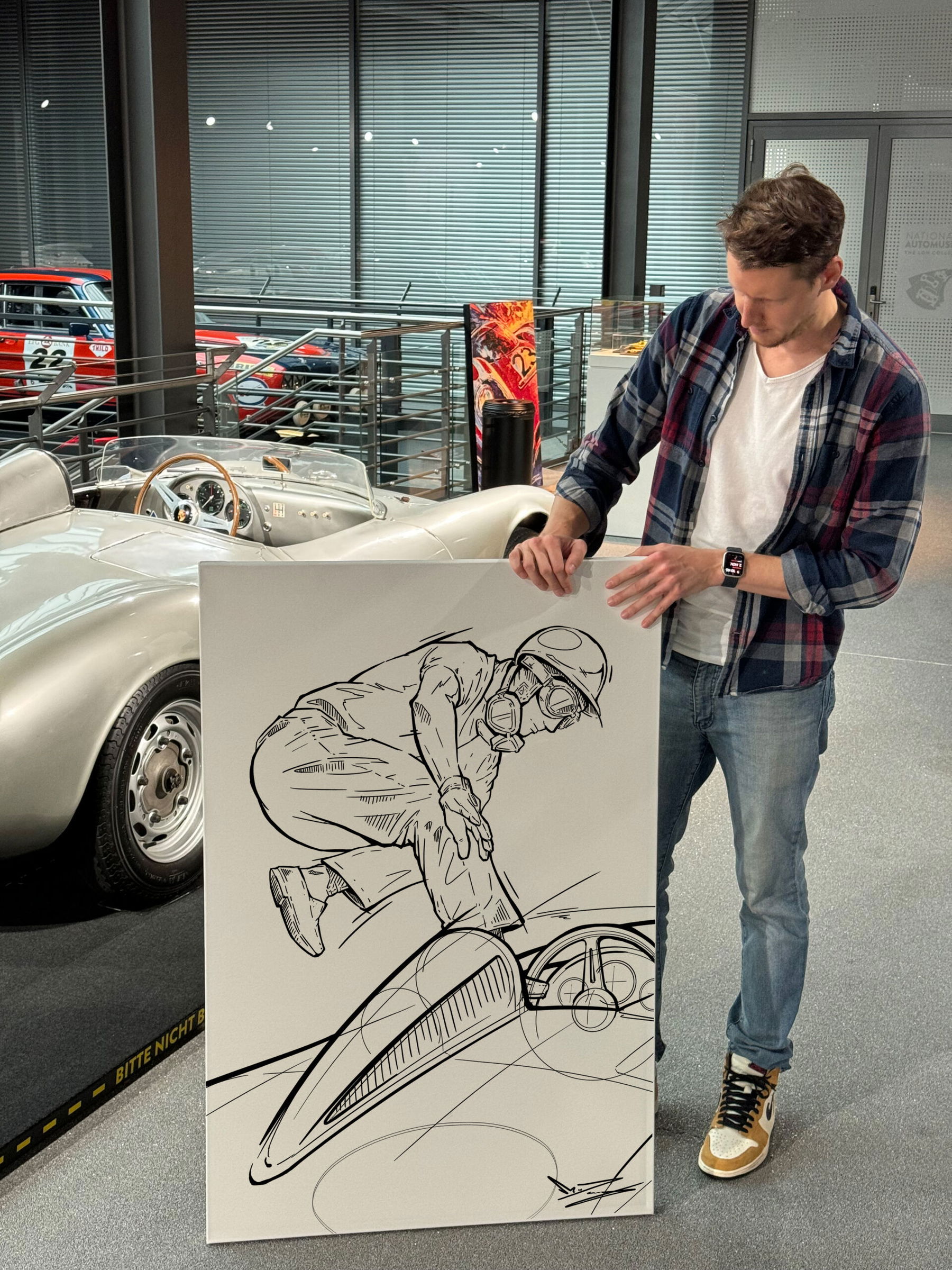
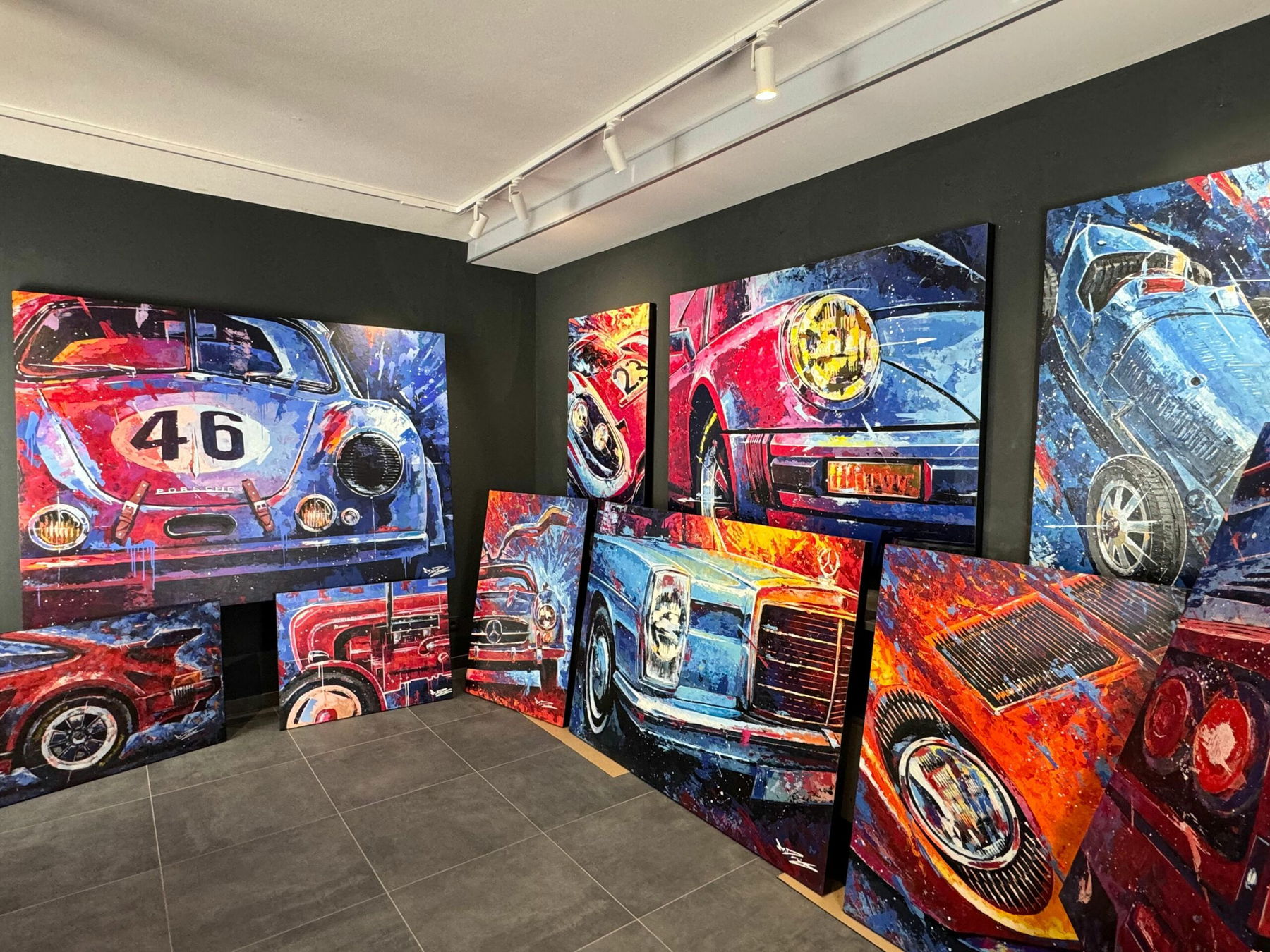
Here, color arrangements that often seem quite involuntary are loaded with meaningful explanations. In the end, everyone is allowed to feel what they want and therefore everything is right. That’s somehow too easy for me. Don’t get me wrong. There are impressive abstract paintings whose colors and compositions I think are great, but I find overly mystified paintings annoying.
[…] if I want to draw a Porsche 911 and the result is a VW Beetle, then I’ve simply messed up the proportions and can’t just shrug my shoulders and claim “artistic freedom”.
Marco Giuliano
As a designer, on the other hand, you communicate proposed solutions. I draw up ideas that can be understood immediately and clearly. Scope for interpretation only arises from a lack of craftsmanship and should not be celebrated. That may sound harsh and unsexy, but if I want to draw a Porsche 911 and the result is a VW Beetle, then I’ve simply messed up the proportions and can’t just shrug my shoulders and claim “artistic freedom”.
In everyday life, I drive an older Mercedes C-Class. The car is sufficient for me to get from A to B. If I want a more deliberate driving experience, I drive a Mercedes 560 SEC in friendlier months. Even though it’s not a Porsche, I find the car visually incredibly exciting.
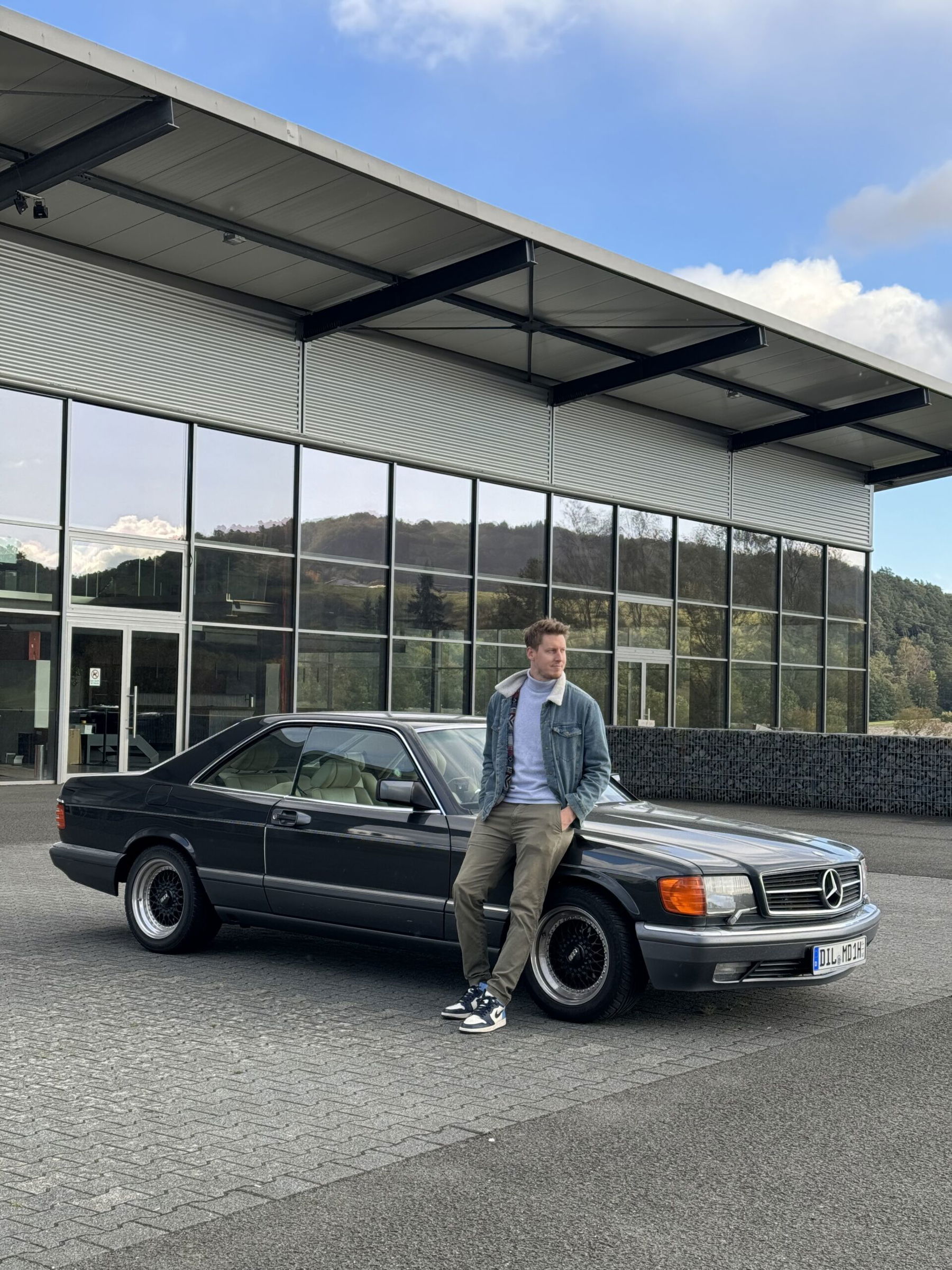
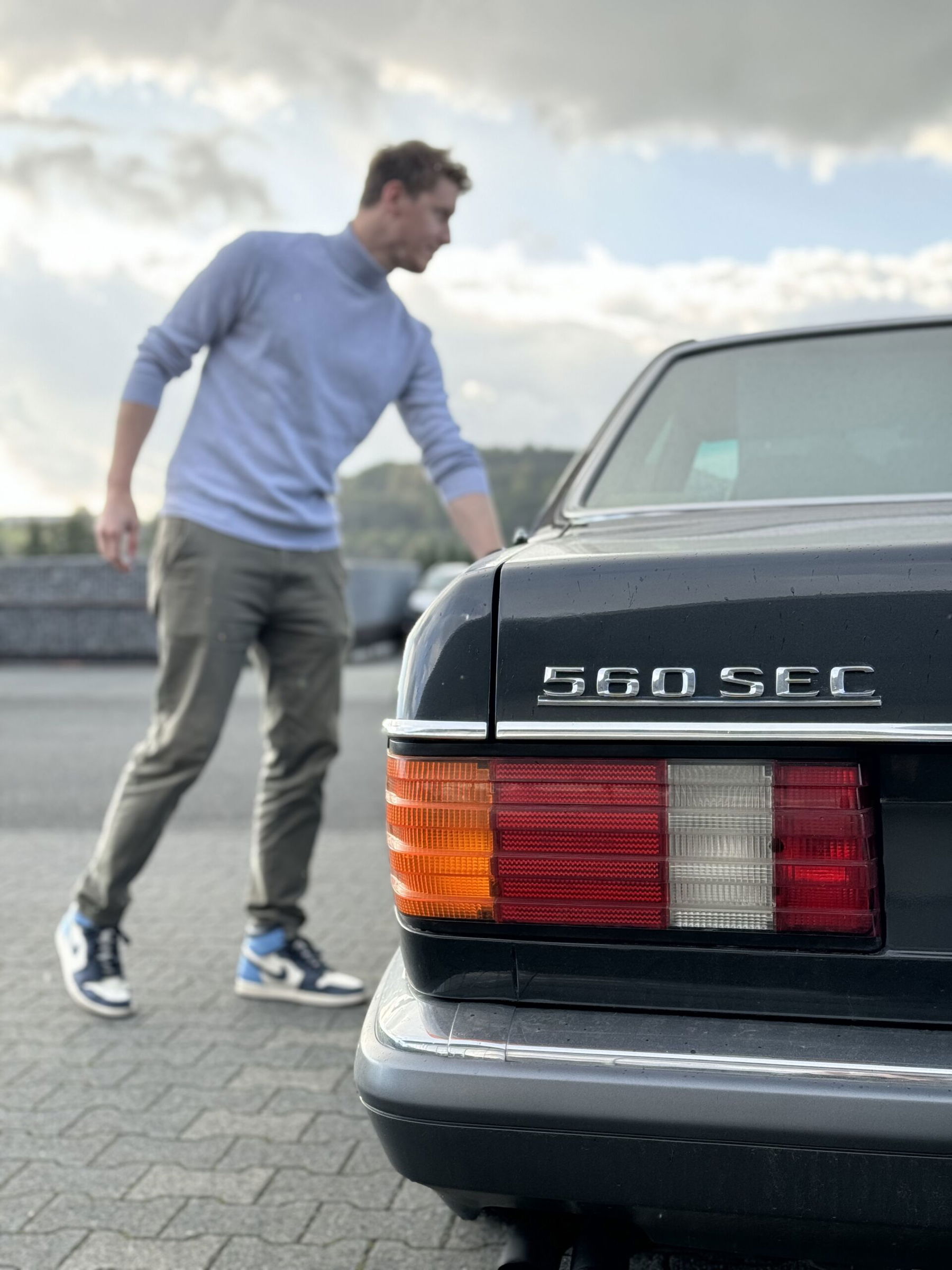
In the 80s, star designer Bruno Sacco created a stunning silhouette with clear and functional lines. The large, no-frills hood, the flat sloping rear window, the removal of the B-pillar and the long overhang of the rear make a real statement. It looks elegant and yet powerful, just as it is visually impressive on the road – a poem!
No one can resist the beauty of a classic Porsche 911.
Marco Giuliano
But I also dream of the design icon among sports cars. No one can resist the beauty of a classic Porsche 911. However, I would still have to sell a few paintings and designs to be able to fulfill this dream. Maybe one day I’ll have a look at the Elferspot marketplace and find my very first Porsche.
I think Porsche is different from other manufacturers. And I don’t just mean that they’ve got the ignition key on the left. We are almost all car drivers. But Porsche drivers are very often a fan community. They share a deep passion for sporty driving. They pray down the performance data of their car with shining eyes and rave about historic exploits from Le Mans or the Nürburgring.
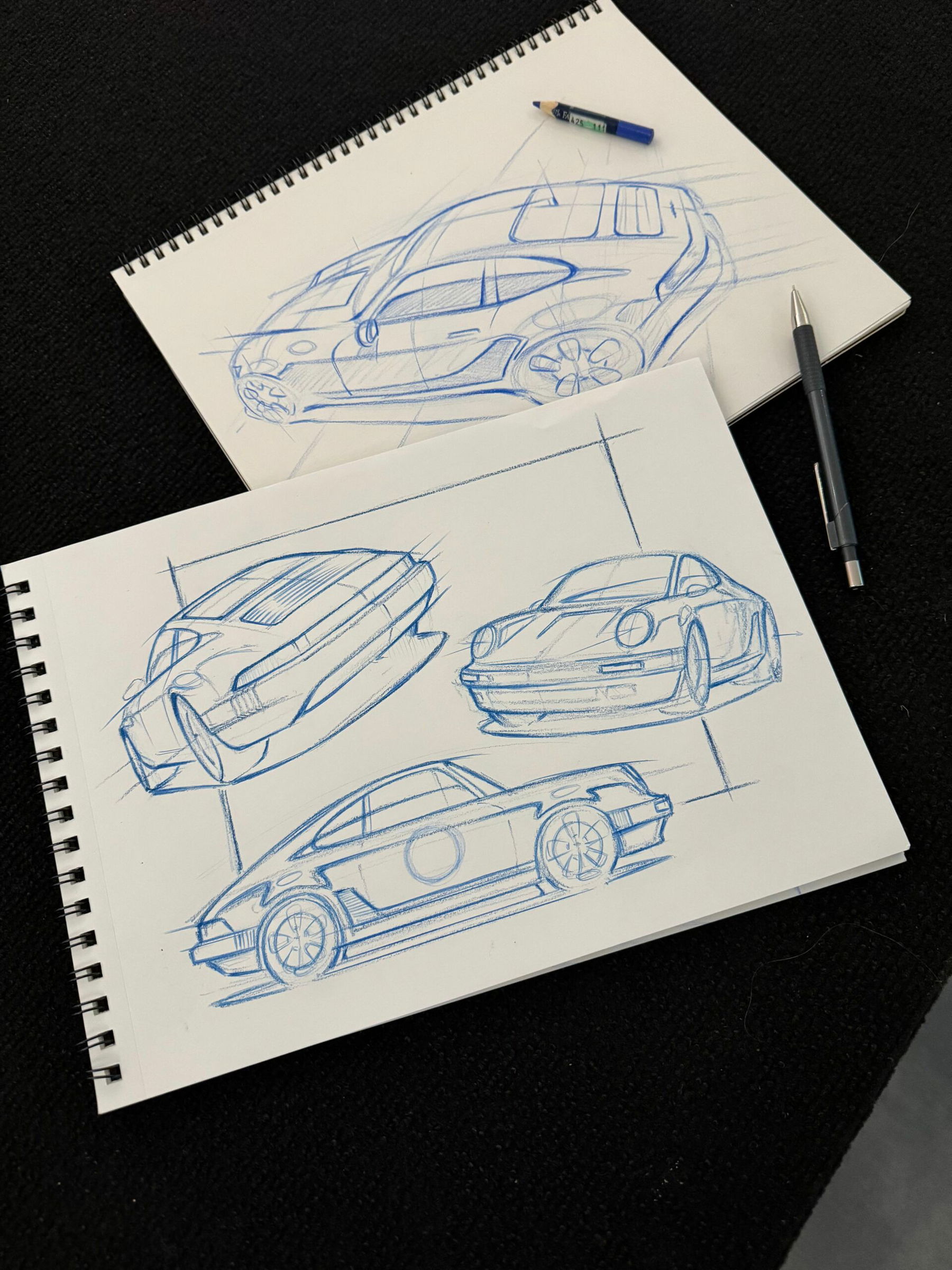
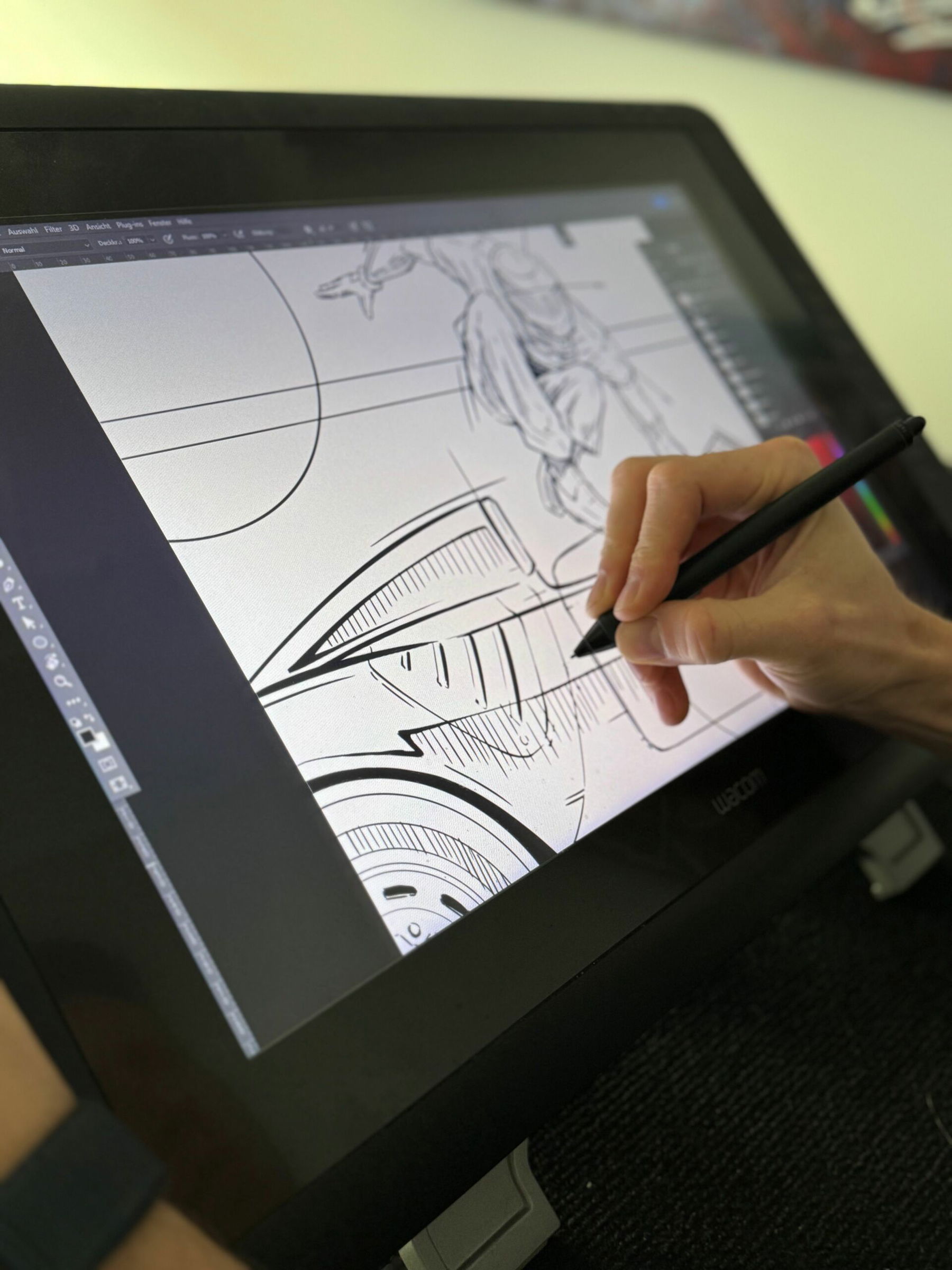
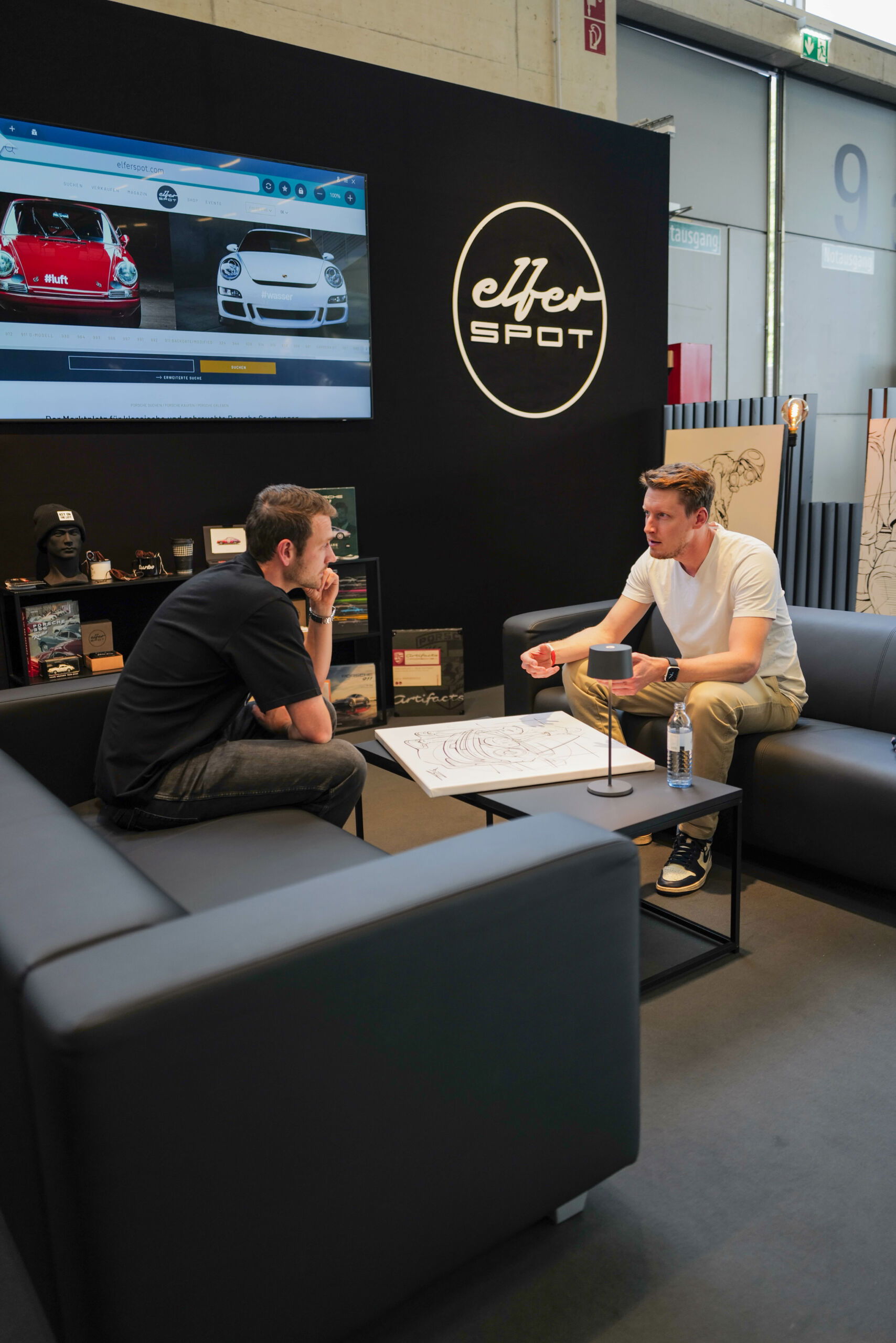
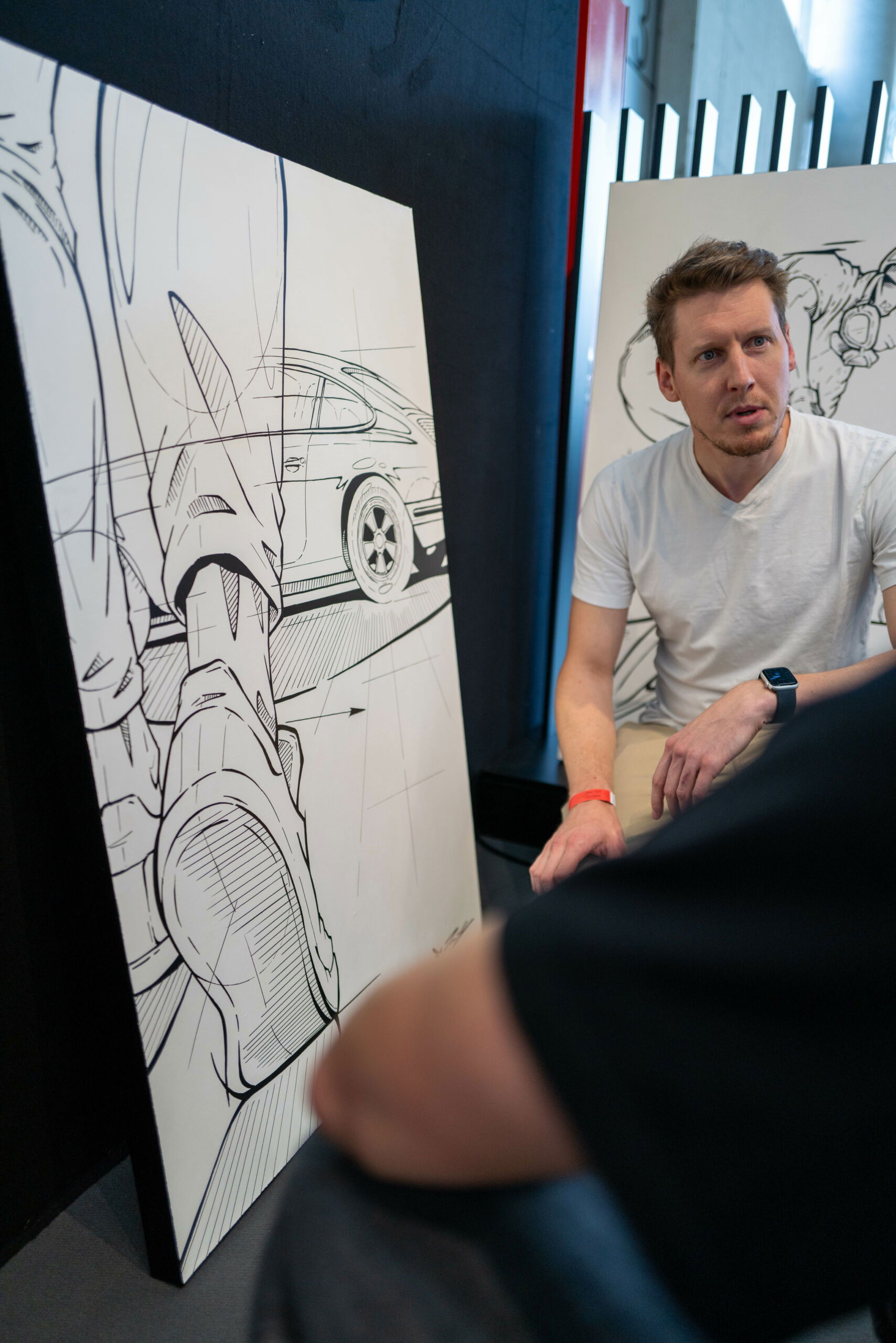
Some have already vanquished the ghosts of the “green hell” in their shiny four-wheeled armor. For them, the car is more than just a means of transportation. It is a symbol. A symbol of aesthetics, sportiness, freedom and – let’s be honest – also of social status. At exhibitions, I often get into conversations with very nice and enthusiastic Porsche people. It’s a great feeling when they see their personal memories reflected in my pictures and talk to me about them.
As is so often the case, time is the biggest limiting factor. At the moment I still have a few commissioned works to do, but I would like to exhibit more in the near future. I’m hopefully kicking things off with an exhibition here at the Automobile Museum. Perhaps – inspired by the article here – some readers of Elferspot magazine will come by.
Elferspot magazine